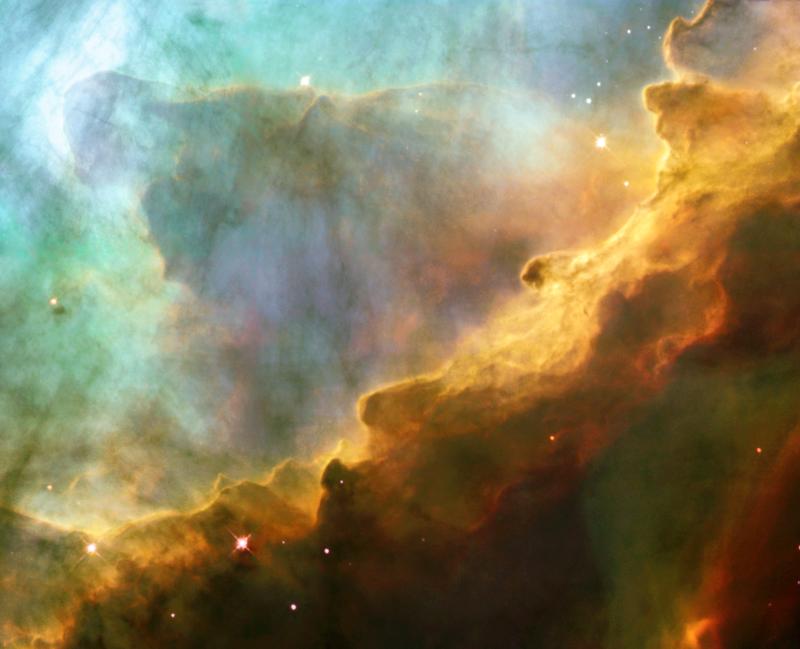Ghosts Lurking from Massive Black Hole
By BellatrixWe all know that super massive black holes lurk in the center of galaxies. We know that they can have strong impacts on the surroundings; usually we can see how things are being impacted by the outflows of energetic particles being ejected from feeding black holes. However, if a black hole is not active and does not have jets usually we cannot see anything left over, any remnants from its energetic past. Well recently using the Chandra X-ray observatory a ghost of an eruption from a massive black hole has been observed and may have some interesting things to tell us.
The X-ray ghost, so-called because a diffuse X-ray source has remained after other radiation from the outburst has died away, is in the Chandra Deep Field-North, one of the deepest X-ray images ever taken. The source HDF 130 is over 10 billion light-years away a time when galaxies and black holes were forming at a high rate. Scientists think the X-ray glow from HDF 130 is evidence for a powerful outburst from its central black hole in the form of jets of energetic particles traveling at almost the speed of light. When the eruption was ongoing, it produced large amounts of radio and X radiation, but after several million years, the radio signal faded from view as the electrons radiated away their energy.
However, less energetic electrons can still produce X-rays by interacting with the pervasive sea of photons remaining from the cosmic background radiation. Collisions between these electrons and the background photons can impart enough energy to the photons to boost them into the X-ray energy band. This process produces an extended X-ray source that lasts for another 30 million years or so.
This is the first X-ray ghost ever seen after the demise of radio-bright jets. Astronomers have observed extensive X-ray emission with a similar origin, but only from galaxies with radio emission on large scales, signifying continued eruptions. In HDF 130, only a point source is detected in radio images, coinciding with the massive elliptical galaxy seen in its optical image. This radio source indicates the presence of a growing supermassive black hole.
The power contained in the black hole eruption was likely to be considerable, equivalent to about a billion supernovas. The energy is dumped into the surroundings and transports and heats the gas. Because they’re so powerful, these eruptions can have profound effects lasting for billions of years.
The data tells us that there should be many more such ghosts lurking around out there, especially if black hole eruptions are as common as are thought in the distant universe. This is a good discovery as it tells us that we do not have to catch a black hole in the act to witness the big impact they can have. Using Chandra I’m sure searches will begin for other such remnants. Once we have found more of them we can search for patterns in the data, see if there are commonalities in these eruptions or links between the data and other such things such as the mass of the black hole.
